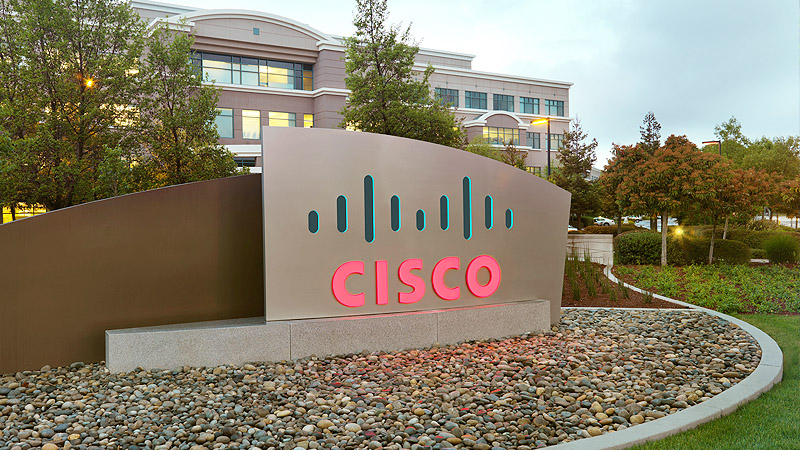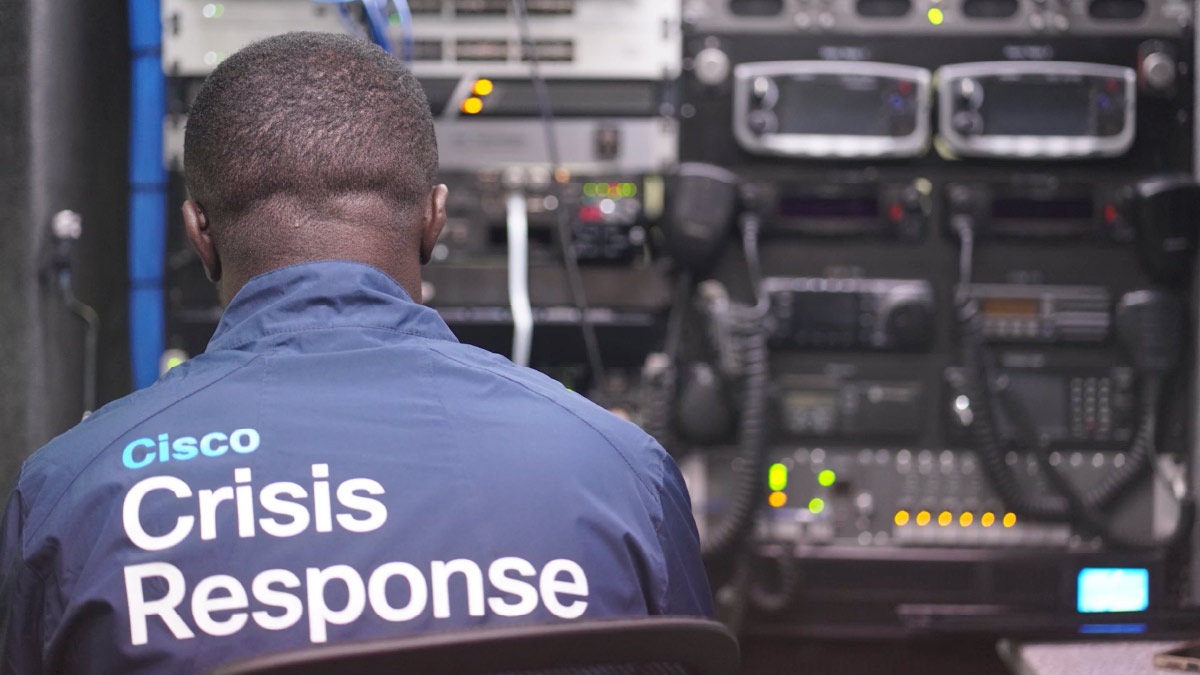CHICAGO - (Supercomm 2005, booth # 71037), June 6, 2005 - Cisco Systems® today announced continued momentum on its initiative to enable service providers to migrate to advanced all-Internet Protocol (IP) networks. Termed the IP Next-Generation Network (IP NGN), this initiative increases providers' abilities to deliver innovative new services, improves their operational and capital expenditure efficiencies, and advances the value-added network and service control that carriers need for long-term business success.
"Service providers worldwide are transitioning to IP NGNs at an accelerated pace," said Jeff Ogle, principal analyst for carrier infrastructure at Current Analysis. "Through its continued innovation, Cisco is one of a small and select group of vendors that has proven its commitment and ability to deliver on the stringent and wide-ranging needs service providers have to make this transition successful for their networks and their businesses."
Cisco first introduced its IP NGN vision and architecture in December 2004. Cisco today continues to build momentum on this strategy. Enabling service provider migration to the IP NGN, Cisco continues to see widespread adoption of its IP NGN solutions.
- British Telecom has chosen Cisco among the eight strategic suppliers for its 21st Century Network (21 CN), one of the most ambitious business transformation program in communications worldwide. BT has a long-standing and successful relationship with Cisco and considers the selection of the right partners for 21CN crucial to its success. Cisco's IP NGN vision has been closely aligned with the BT 21CN roadmap to achieve IP network convergence. Cisco's proposal positioned the Cisco Carrier Routing System (CRS-1) family and IOS XR operating system as key enablers of BT's network transformation. (See announcement dated April 28, 2005)
- Cisco announced that Kabel Deutschland (KDG), Europe's largest cable operator, has implemented Cisco IP NGN solutions to deliver converged voice, video and data - or "Triple Play" - services over its cable broadband network, serving the city of Leipzig. The new converged IP NGN infrastructure is supporting the launch of KDG's "Kabel Phone" service, giving customers access to digital telephony services, in addition to television, radio and Internet services over the same cable broadband connection. KDG customers participating in the Leipzig pilot project have been able to make digital telephone calls over a cable connection instead of the usual telephone connection since April 1 this year. The KDG "Kabel Phone" service is scheduled to be available in as many as fifteen additional cities - including Hamburg, Berlin, Munich, Dresden and Koblenz - by the fourth quarter this year. (See announcement dated May 31, 2005)
- Singapore Telecommunications Limited (SingTel), Asia's leading communications group, is launching a security solutions suite in Asia with the latest integrated services routers (ISRs) from Cisco, aimed at small and medium-sized business (SMB), enterprise small office and teleworkers. The offering will provide better manageability of quality and risk reduction arising from network complexity. With the offering, customers are able to achieve integrated communications network convergence consisting of voice, data and video. The latest Cisco ISRs are at the heart of SingTel's security solutions suite. These routers are the first in the industry to offer security, voice and wireless functionality together with connectivity in one box. (See announcement dated May 31, 2005)
- Cisco and NTT Com announced that they have successfully demonstrated on-demand network settings and automatic fault recovery between Tokyo and Osaka by utilizing generalized multiprotocol label switching (GMPLS) technology available on Cisco 12000 Series routers. GMPLS is an emerging technology that extends the benefits of MPLS to provide signaling and routing capabilities for devices in both optical and Internet Protocol (IP) network domains. In the experiment, NTT deployed GMPLS control plane on Cisco 12000 Series routers over a wide-area synchronous digital hierarchy (SDH) optical network to demonstrate autonomous network settings. The testing succeeded in running conventional fixed redundant switch-over functions and autonomous re-rerouting functions using GMPLS. (See announcement dated June 3, 2005)
- Cisco and Fujitsu Limited announced the development of a co-branded version of the Cisco Carrier Routing System (CRS-1), built on the Cisco IOS XR next-generation operating system. The result of a strategic alliance announced in December 2004, this co-branded version is initially targeted towards the Japanese market and its leading-edge broadband requirements. IOS XR is the industry's only self-healing operating system for multi-shelf carrier infrastructure, which provides granular process independence, fault containment and isolation, and software upgrades by process for "always-on" operation. (See announcement dated May 24, 2005)
Continuously innovating to achieve its IP NGN vision, Cisco is gaining ground with a number of service provider-focused solutions and milestones:
- Cisco has shipped 100 production and trial units of its Cisco Carrier Routing System (CRS-1) to customers worldwide in less than one full year of its initial availability, a figure far exceeding internal projections due to the long sales cycle of core platforms. As the core of the Cisco IP NGN network layer, the CRS-1 has now been shipped to 30 service providers, 15 of which are using the system in production networks. Announced customers include Swisscom and Yahoo! Broadband.
- The Cisco Distributed Denial of Service (DDoS) Protection solution builds on Cisco leadership in security and in managed services, enabling providers to deliver managed DDoS protection to their customers. This market-proven solution can be deployed in several ways to address different security service opportunities. Security features are an integral part of Cisco IP NGN architecture. At the Service Layer, the DDoS Protection solution enables service providers to deploy network-based security services for added revenue and fulfill the market demands for security with simplicity. As a part of the operational layer in the Cisco IP NGN architecture, this solution also enables service providers to deploy hardening and protection measures designed to shield their own network infrastructure from DDoS attacks. This helps allow them to continue delivering resilient IP services -- including VPN, IP communications, video and on-line gaming, to their customers -- without disruption. Customers include Sprint. (See today's related announcement)
- The Cisco WebVPN Service Module is designed to provide both enterprise and service provider customers with remote SSL Virtual Private Network (VPN) capabilities from any web browser. The WebVPN Services Module scales to support up to 8,000 concurrent SSL VPN remote access users per module and up to 32,000 users per chassis. Advanced virtualization capabilities on the WebVPN Services Module enable a physical module to act as multiple, logical SSL VPN gateways with each having its own policy and management support. This provides network segmentation of remote access based on user, location or application type with lowered capital and operational expenditure. (See announcement dated June 2, 2005)
- The Cisco Reconfigurable Add/Drop Multiplexing (ROADM) solution continues to be adopted by a wide variety of service provider customers, with 650 implementations to date globally. These deployments help enable service providers to expand their offerings to include services such as video on demand, voice over Internet Protocol (VoIP), storage area networking (SAN) and Fibre Channel. Integral to the transport component of the Cisco IP NGN network layer, the Cisco ROADM solution also helps customers provision any wavelength at any time and anywhere in the network, simplifying network maintenance and decreasing deployment time. Customers include Eastlink, the University of Wisconsin and Veroxity.(See today's related announcement)
"Providers of all sizes all over the world continue to move toward IP NGNs, based on the clear benefits to them and to their business customers," said Jeff Spagnola, vice president, service provider marketing at Cisco. "The progress that we've seen just in the past few months validates our momentum relative to this vision. We continue to work closely with service providers of all types and in all areas of the world to ensure that the solutions we develop meet their needs and their customers' needs, and that we are not only the IP NGN technology leader, but also their trusted business partner."


